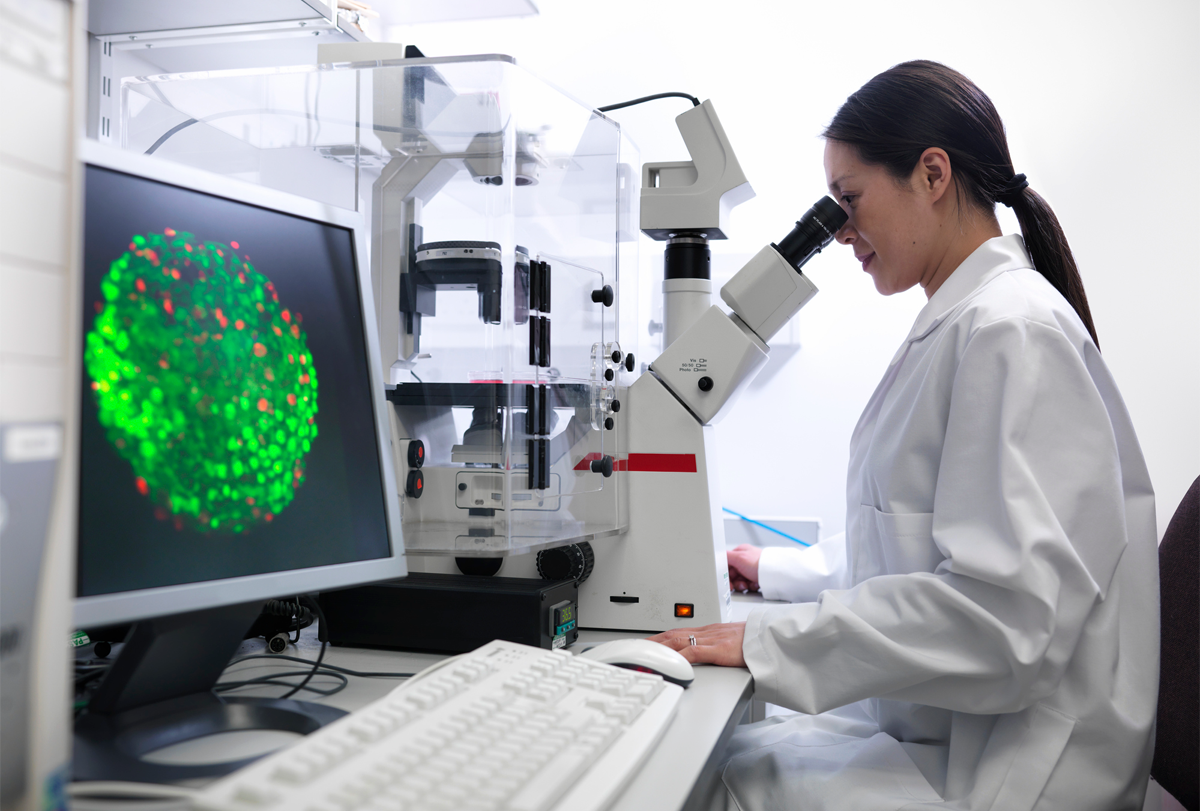Stem cells have proven to be powerful — and popular — tools for understanding human biology and conditions such as autism. But there is an urgent need for standardization and quality control, says a task force of scientists organized by the International Society for Stem Cell Research (ISSCR). For example, although researchers typically submit only their cleanest and best-characterized cell lines to stem cell banks, the WiCell Research Institute, in Madison, Wisconsin, has shared that more than one-third of submitted cell lines fail quality testing.
“That really puts a number to that need,” says Jack Mosher, lead staff member for the task force and scientific adviser at the ISSCR. “If these are the best lines being sent off for banking and subsequent distribution, what does that say about the lines that aren’t the best?”
Mosher and his colleagues have developed a 75-page set of standards to guide techniques and reporting requirements for basic scientific research using pluripotent and tissue stem cells. That document, published online in June, tackles issues such as registering a unique identifier for cell lines, adhering to donor consent rules and safeguarding against contamination and random mutations. It also includes a checklist for reporting practices that researchers can use before submitting papers, and that journal editors and reviewers can consult when evaluating submitted work.
The drafting process took almost two years and involved multiple rounds of writing by a team of 24 scientists, peer review by 70 external scientists and feedback from many more. Mosher and his colleagues published a short summary article describing this effort last month in Stem Cell Reports, the ISSCR’s journal.
Spectrum spoke with Mosher about the standards and how the ISSCR hopes they will impact research. (The ISSCR’s work was supported in part by the Simons Foundation Autism Research Initiative, which is funded by the Simons Foundation, Spectrum’s parent organization.)
The interview has been edited for length and clarity.
Spectrum: What prompted the ISSCR to develop these standards?
Jack Mosher: It was clear there was a need. For several years now, the field has been talking about ways to increase rigor and reproducibility. There have been specific examples in the literature where both have broken down, calling into question the validity of the research and the implications. Editors of scientific journals have written numerous editorials about this problem, and the funders have started putting checks and balances in place.
Finally, because stem cells have become such a useful and widespread tool, now you have scientists coming in from many different disciplines. So there’s a need to develop that standardization so that everyone’s on the same page.
S: What do scientists need to do to implement these standards?
JM: There are, I would argue, no new concepts in this document. It’s all about implementing best practices for the use of these cells. It was designed to be financially and technically tractable in any part of the world. That said, there are costs associated with, for example, assaying the genotype of your cell line — whether it’s time spent, because you can do it in-lab, or money spent, because you need to outsource it.
In many cases, we recommend a particular approach because it’s the standard. But we recognize that there are other methods that are just as suitable. The point isn’t that you use a particular method; the point is that you’re aware that you need to check your lines, and you do it in a way that you can report later.
S: How will the standards be enforced?
JM: Enforcement isn’t a word we would use. These are best practice principles. They’re designed for awareness and transparency.
What I will say is that we have worked from the very beginning with editors in some of the journals in this space to ask them: What would help you as an editor or a reviewer? What they said very clearly is that, yes, there is a need for something concise like a checklist, something the author can see and have in their hands to help improve the quality of their document. A number of journals already have a checklist for certain aspects of the science, and our checklist is specifically for the use of stem cells.
Since the document has come out in June, several journals we were working with have stated they will adopt our checklist and have it for scientists who submit papers. For example, in the October Stem Cell Reports, we will have this list for anybody submitting a paper with human stem cells. They’ll go through the list, and they’ll check the data and indicate what they did and on what page.
Initially that’s just going to be a trial, but eventually we anticipate this document would go to the reviewers and the editors. But in no way will this be a binary, like, if you didn’t do this it’s not going to be accepted. It’s simply a guide to increase transparency and ultimately increase the quality of the science.
S: How has the research community reacted to the standards so far?
JM: From my perspective, it’s been really well received. We had a session at the annual meeting this past June where we rolled out the final version to the community, and we had great feedback. We’ve started presenting it at our symposia and have gotten good feedback there.
We’re just trying to get the word out that the standards are available, and since it’s a new document, we’d like to get feedback on what parts are useful; what parts can be improved; are there pieces that we’ve missed? Like our other documents, the standards will undergo revisions, because it’s a dynamic field.
S: How might these standards affect autism research involving stem cells?
JM: The document was designed to provide overarching and principle-based recommendations that will help anybody using adult tissue or pluripotent stem cells. It doesn’t address a specific disease or cell type; it will help people working on any disease.
With autism research specifically, there are laboratories now using stem-cell-derived organoid models to study brain development and look at the early developmental processes of this condition from patient-specific lines. This is a really unique aspect of induced pluripotent stem cell technology that has made a huge impact in understanding human disease in a way that animal models can’t always replicate. So we have an entire section in the document devoted to model systems: organoids, organs on a chip and microphysiological systems. We had a number of people on the steering committee who specifically use brain organoids, and so they knew to think about many of these issues for this technology.
S: Does the ISCCR plan to develop more standards for the field?
JM: This document is part of a bigger standards initiative. Phase one is basic research, so that the foundation is rock solid. But phase two is now in process: We’re developing a set of best practices for the translation into therapeutics. We hope this second initiative, which still has a year to go, will have the same impact on the translation of stem-cell-derived therapies as this one will have on basic research using stem cells.



